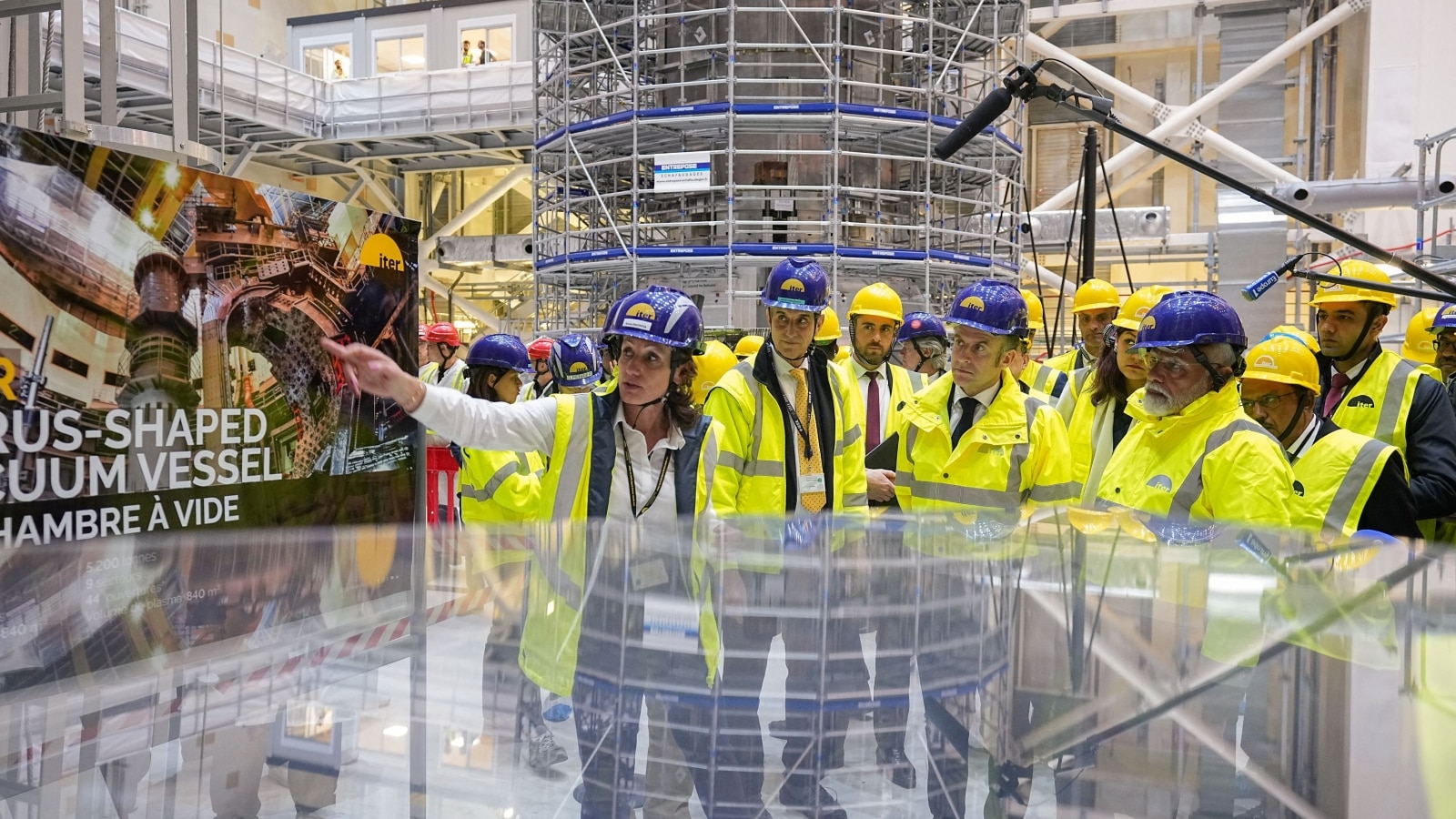 |
|
Prime Minister Narendra Modi's recent visit to the International Thermonuclear Experimental Reactor (ITER) facility in Cadarache, France, alongside French President Emmanuel Macron, underscores the global significance of this ambitious project and India's substantial contribution to it. ITER represents a monumental undertaking in the pursuit of clean and virtually limitless energy through nuclear fusion, a process mimicking the energy generation of stars. The facility houses the world's largest tokamak, a doughnut-shaped device designed to confine and heat plasma to temperatures exceeding 150 million degrees Celsius, initiating fusion reactions. This visit, the first by a head of state or government, highlights the international cooperation and technological prowess driving this endeavor.
The ITER project, involving 35 nations including India, has been underway since 2005 with the goal of demonstrating the feasibility of fusion power on a large scale. The technology's potential to provide a carbon-free energy source is immense, offering a pathway to mitigate climate change and address global energy security concerns. Unlike conventional fission-based nuclear power plants which rely on splitting atoms, fusion involves combining atoms—specifically isotopes of hydrogen, deuterium and tritium—to release vast amounts of energy. The process yields minimal radioactive waste and avoids the risks associated with uranium enrichment or nuclear meltdowns. ITER's success is crucial for proving the technological and economic viability of fusion energy, paving the way for future fusion power plants capable of generating electricity.
The significance of PM Modi's visit extends beyond a mere symbolic gesture. India's active participation in the ITER project, involving hundreds of scientists, engineers, and industrial partners like L&T, Inox India, TCS, TCE, and HCL Technologies, demonstrates the nation's commitment to cutting-edge scientific research and technological innovation on the global stage. The collaboration offers substantial opportunities for technological advancement, knowledge transfer, and the development of highly skilled human capital in India's scientific and engineering sectors. Furthermore, Modi's presence underscores India's proactive role in addressing global energy challenges and contributing to a sustainable future. The visit serves as a testament to India's growing influence in the international scientific community and its ambition to be a leader in advanced energy technologies.
The tokamak at ITER utilizes powerful magnetic fields to confine the extremely hot plasma, preventing it from interacting with the reactor walls. The process of achieving sustained fusion reactions requires overcoming significant technical challenges, including maintaining the plasma's stability and temperature over extended periods. ITER's experiments will focus on exploring different operational parameters and testing various technologies essential for future fusion power plants. These experiments will gather crucial data to optimize reactor design, improve plasma confinement techniques, and develop efficient methods for tritium breeding and handling – tritium being a crucial fuel for fusion. The knowledge gained will be invaluable for the design and construction of future demonstration fusion power plants capable of generating electricity.
The timeline for achieving sustained fusion reactions at ITER is ambitious, with the goal set for 2039, at which point the reactor is projected to produce 500 MW of fusion power. It's important to note that ITER itself will not directly generate electricity; rather, its primary objective is to demonstrate the scientific feasibility of fusion. However, the success of ITER will pave the way for the development of commercial-scale fusion power plants in the following decades. The project's long-term implications are far-reaching, potentially transforming global energy production by providing a clean, safe, and virtually limitless source of power. The collaboration fostered by ITER is a beacon of international cooperation, highlighting how collective global efforts can tackle major scientific and technological challenges for the benefit of humanity.
Source: What is ITER and why is PM Modi’s visit to the facility significant?
